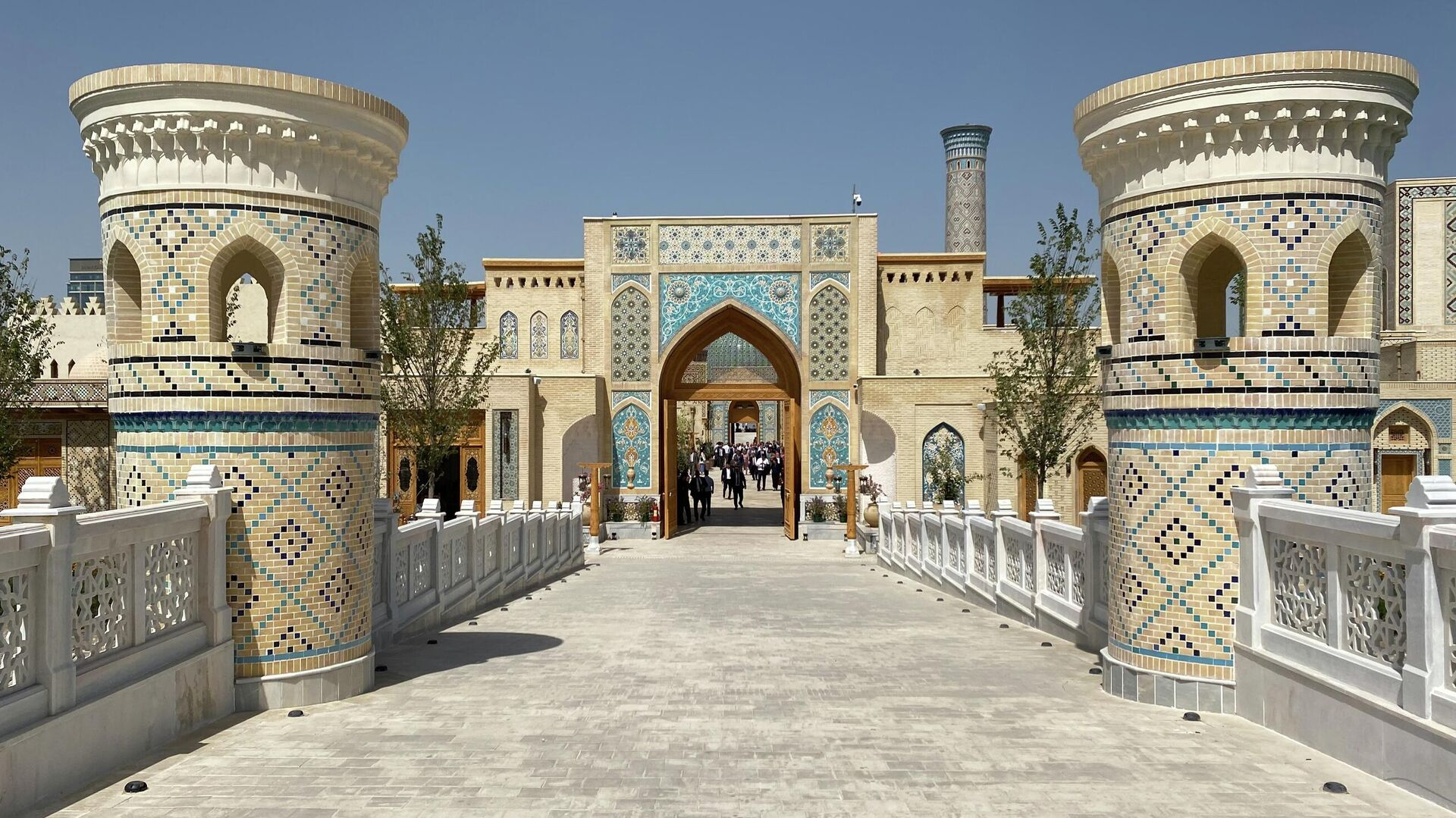
8 days - Tashkent - Samarkand - Shakhrisabz - Bukhara - Chimgan - Parkent
8 days - Tashkent - Samarkand - Shakhrisabz - Bukhara - Chimgan - Parkent
Samarkand:
Transfer to the railway station for the train to Samarkand.
Meeting in Samarkand with a guide and a car. Excursion around the city.
Most of the main attractions of Samarkand are the creations of Timur, his grandson Ulugbek and the Uzbek Sheibanids.
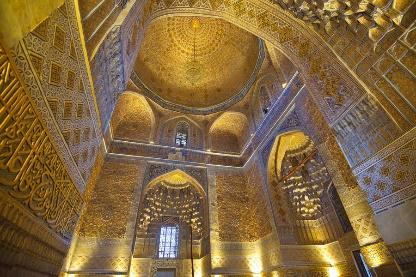
Mausoleum Gur-Emir - the burial place of Timur, his 2 sons and 2 grandsons

Stop at the majestic Registan, the shopping center of medieval Samarkand and the huge bazaar
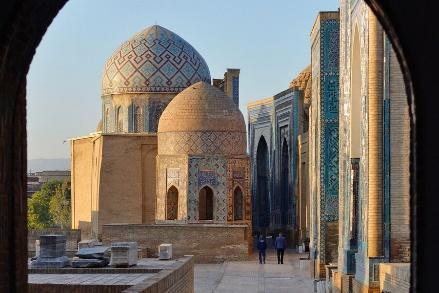
Walk along the street of Shah-i-Zinda tombs. The name means the tomb of the Living King

The Bibi-Khanum Mosque, built shortly before Timur's death and named after his Chinese wife

Visit the Ulugbek observatory, see the remains of a huge astrolabe
Shakhrisabz:
Excursion Samarkand - Shakhrisabe
The shortest way from Samarkand to Shakhrisabz runs through the picturesque Aman-Kutan pass. This is a narrow winding road rising to a height of 1650 meters above sea level.
In the mountains you will have a picnic (Besh Chinor), where you can taste the meat of a young lamb cooked in a tandoor on juniper twigs
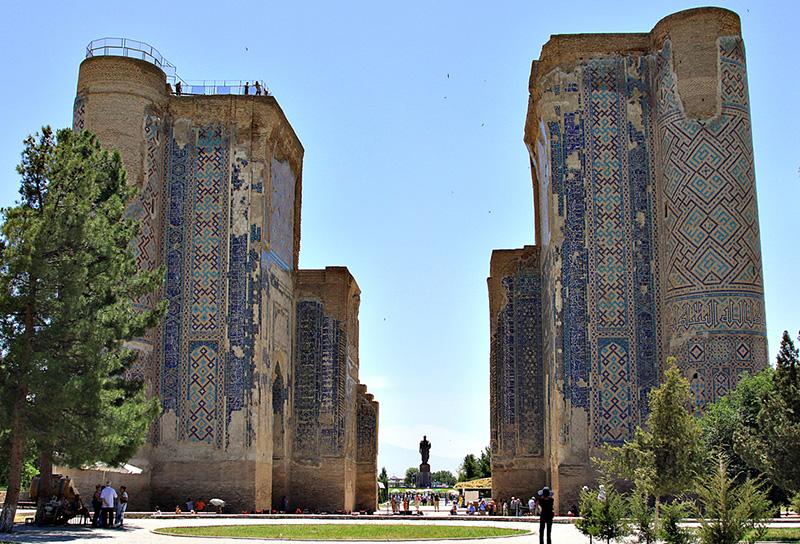
One of the main attractions of Shakhrisabz is the palace of Amir Timur Aksaray.
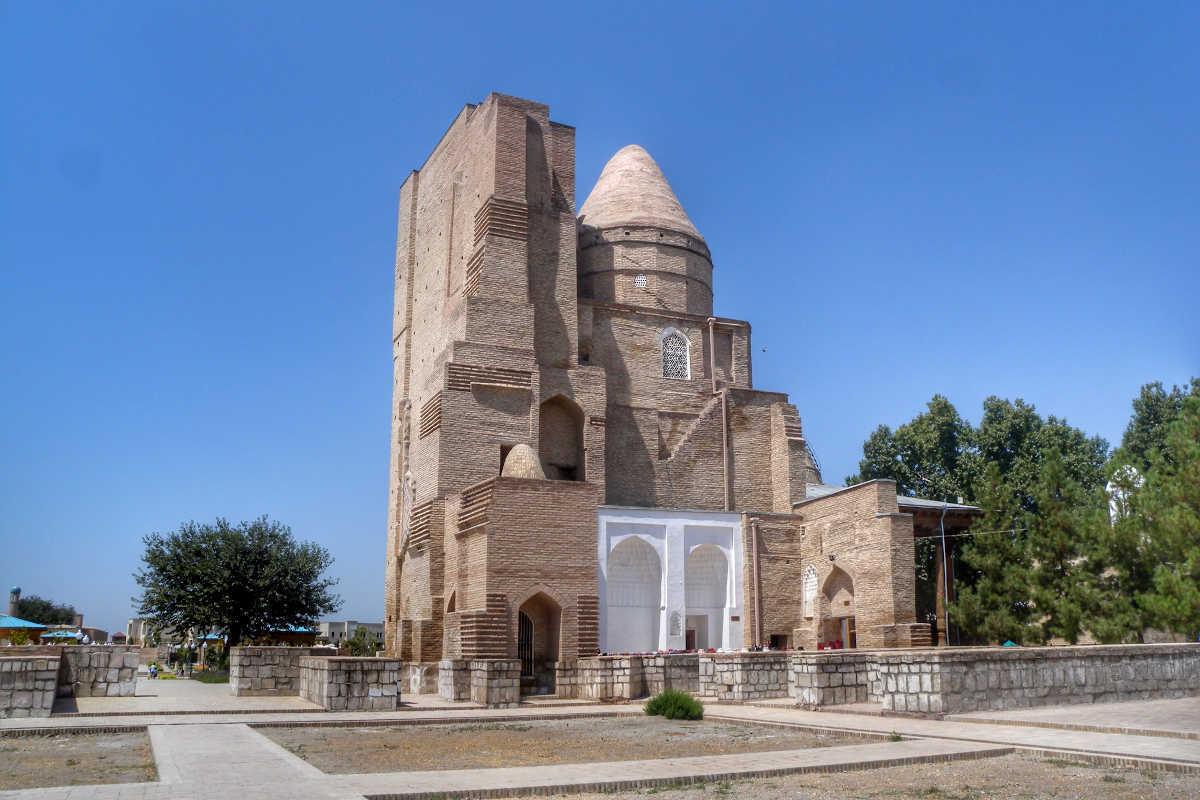
The complex is called Dorus-Saodat (Dorussiadat), which in translation into Russian means "receptacle of power."

The burial ensemble Dorut-Tillyavat (translated as “Place of Reflections”) dates back to the end of the 14th - beginning of the 15th centuries.

Mosque "Kok - Gumbaz" Translated into Russian, "Kok - Gumbaz" means "Blue Dome". The mosque was built in 1435 on the skeletons of an earlier building.
Evening train "Afrosiab" Samarkand - Bukhara. Meeting at the railway station in Bukhara. Transfer to the hotel.
Bukhara
Walking tour of Bukhara with a guide:
Buildings included in the UNESCO list, with a thousand-year history.
The tour includes the Ark Citadel, which is the residence of the Bukhara khans, the Kalyan minaret, known as the Tower of Death (in the Middle Ages, criminals were thrown to death from the top) and the Samanid mausoleum of the 9th century.


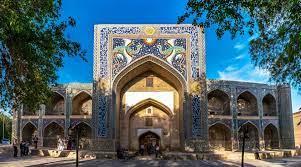

dynastic mausoleum of the Samanids in the historical center of Bukhara (Uzbekistan), built at the turn of the 9th and 10th centuries
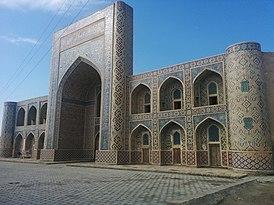
Madrassah of Abdulla Khan (Uzbek Madrassah of Abdullaxon) - a medieval building of a higher educational institution
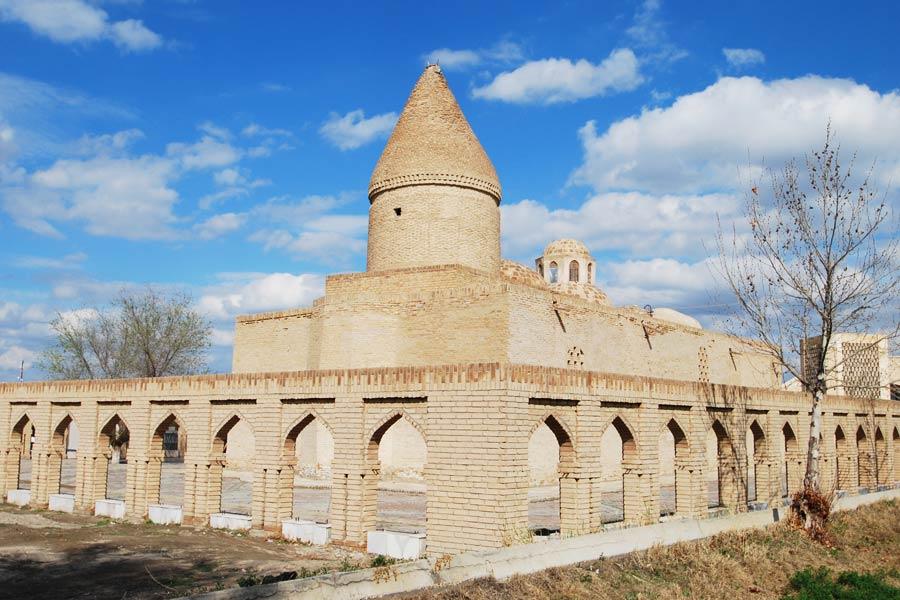
The Chashma-Ayub mausoleum is a religious building in the center of Bukhara, it includes a mausoleum and a sacred spring.
Madrasah Nodir-Divan-Begi is a madrasah in Bukhara, part of the architectural ensemble of the XVI-XVII centuries Lyabi-Khauz.
You will relax with a cup of fragrant green tea in Lyabi-Hauz, a quiet square overlooking the pool, which was created in 1620. It sits in the shade of mulberry trees as old as the pool.
This evening you will attend an open-air folklore show with dinner, which includes national dances, a musical performance on national instruments and a fashion show of national clothes
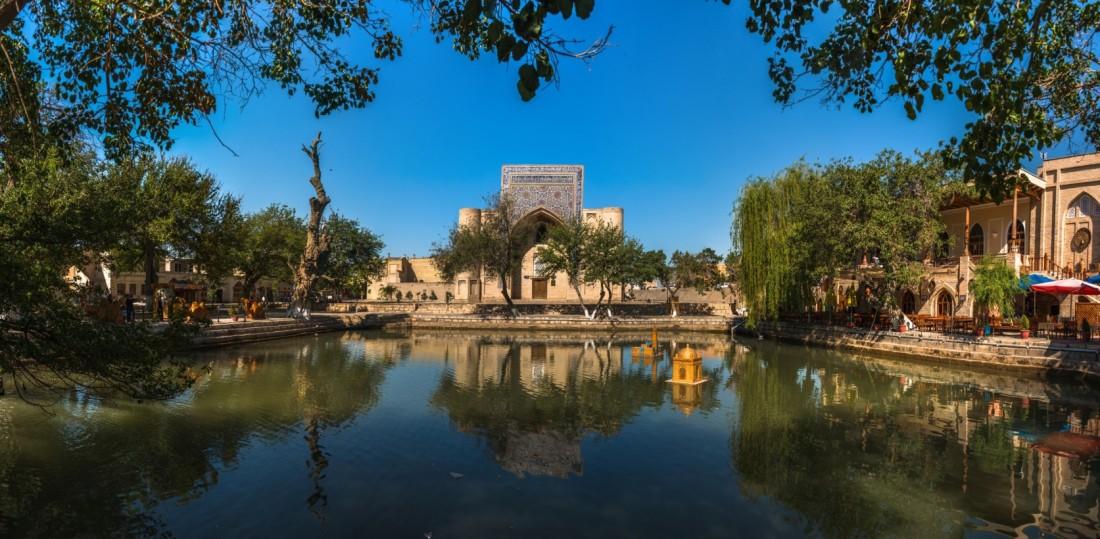
Bukhara. Country excursion

Emir's summer palace and the Chor-Bakr necropolis near Bukhara ("memorial complex of the four brothers"), also known as the City of the Dead.

The Sitorai-Mohi-Khosa Palace (Uzb. Sitorai Mohi Khossa Saroyi - Palace like the stars and the moon) is the country residence of the Emir of Bukhara, built in the late 19th - early 20th centuries..

Madrassah Caliph Niyozkuli (Niyazkuli) (better known as Chor-Minor - translated as Four Minarets

Baha ad-Din is a cult ensemble located in the suburban area of Bukhara. The complex served as the center of the Nakshbandi dervish order.
Tashkent:
Free time before the railway crossing
Tranfser
Train Bukhara - Tashkent
Meeting at the station in Tashkent
Dinner at the Sim-Sim restaurant
Tashkent - Chimgan
After breakfast, departure to the Chimgan tract, spurs of the Western Tien Shan
Moving along the mountain serpentine, we climb the sandy pass, 1830m high, descend to the Chimgan tract, where you can enjoy the clean mountain air. Trekking on horseback, ride a cable car.


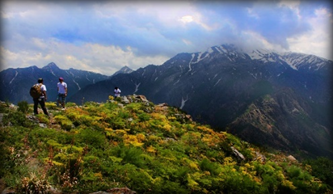
Then we descend to the Charvak reservoir, which is formed by the confluence of three mountain rivers - Chatkal, Koksu and Pskem. We pass the Charvak dam 300m high. Then we go down to the village of Khodjikent, where the oldest 700-year-old plane tree (plane tree) is located. Encampment of an ancient man, rock paintings. We have lunch at the national tea house. In the evening we return to Tashkent

Excursion around Tashkent.
Square and Museum of Amir Timur the Conqueror.
Next, you head to one of the most visited places - the Museum of Applied Arts, which has shops with antique carpets, suzani, silver, lacquer miniatures, silk and other unique goods. You can also shop with the best masters of miniature and woodcarving at the Abdul Kasym Madrasah.
Nearby is the Friendship of Peoples square, which was formed after the Tashkent earthquake in 1966.
Then you will continue to the Old City, which includes the Khast-Imam complex, formed around the grave of the prominent Muslim scholar Hazrati Imam.
Here in the library, you will have the opportunity to see the Osman Koran (the oldest surviving Koran in the world).
Continue to the Barakhana Madrasah near the Hastimom mahalla»
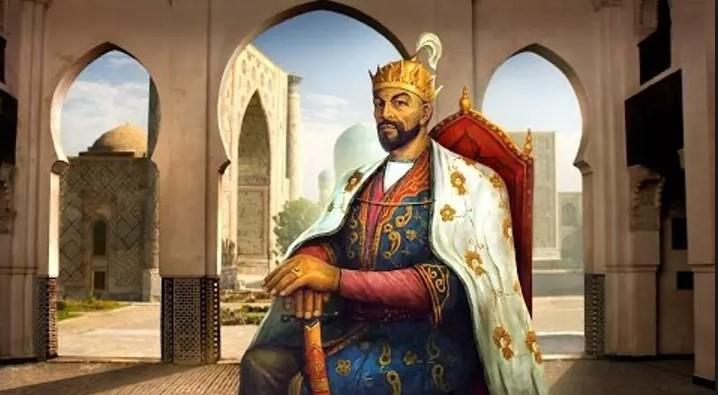
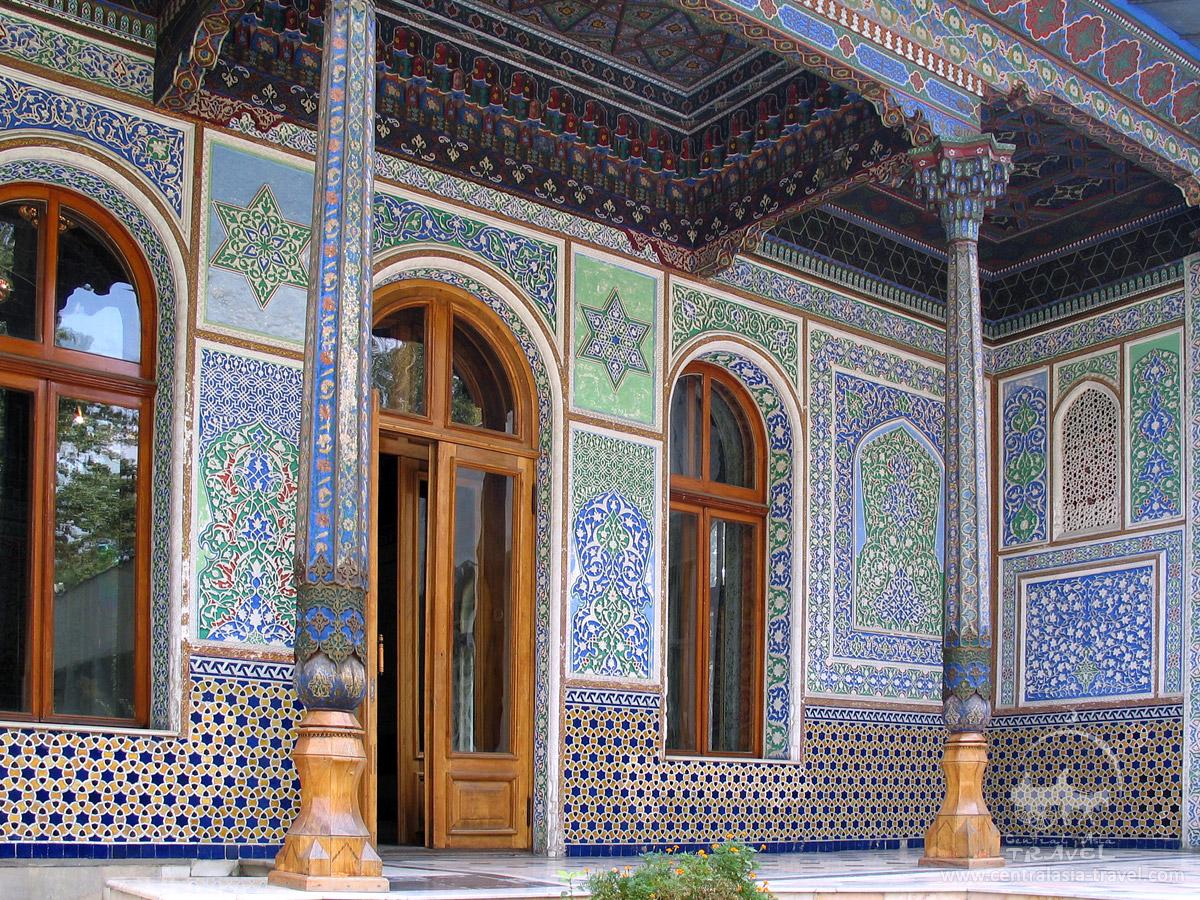

После комплекса вы посетите рынок Чорсу, крупнейший в Средней Азии.
Посещение Iconic Plov Center, где можно увидеть и попробовать процесс приготовления плова – национального блюда Узбекистана.
.jpg)
Parkent. Sun Institute.
A fascinating trip from Tashkent to the Institute of the Sun near the city of Parkent, along the beautiful spurs of the Chatkal foothills, is one of the popular tourist destinations for guests and residents of Tashkent. A visit to the largest solar furnace, a contrasting combination of blooming mountain nature and futuristic types of heliostats, a sightseeing tour of the heliocomplex


After the tour, we will go for lunch to the village of Sukok, passing the vineyards, we will stop at the Chaikhana on the banks of a mountain river.

Return to Tashkent
